Discover 11 hidden attractions, cool sights, and unusual things to do in Abergavenny (United Kingdom). Don't miss out on these must-see attractions: White Castle, Grosmont Castle, and Abergavenny Castle. Also, be sure to include Ysgyryd Fawr in your itinerary.
Below, you can find the list of the most amazing places you should visit in Abergavenny (Wales).
Table of Contents
White Castle
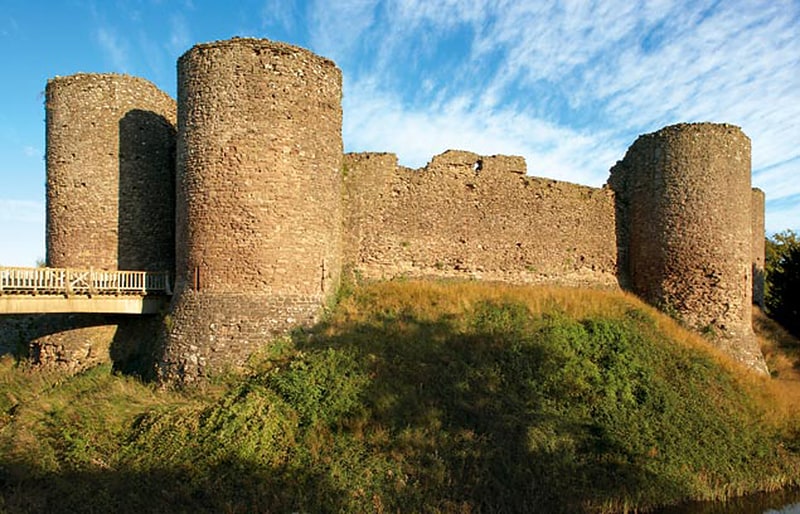
Castle in Wales. White Castle, also known historically as Llantilio Castle, is a ruined castle near the village of Llantilio Crossenny in Monmouthshire, Wales. The fortification was established by the Normans in the wake of the invasion of England in 1066, to protect the route from Wales to Hereford. Possibly commissioned by William fitz Osbern, the Earl of Hereford, it comprised three large earthworks with timber defences. In 1135, a major Welsh revolt took place and in response King Stephen brought together White Castle and its sister fortifications of Grosmont and Skenfrith to form a lordship known as the "Three Castles", which continued to play a role in defending the region from Welsh attack for several centuries.
King John gave the castle to a powerful royal official, Hubert de Burgh, in 1201. Over the next few decades, it passed back and forth between several owners, as Hubert, the rival de Braose family, and the Crown took control of the property. During this period, White Castle was substantially rebuilt, with stone curtain walls, mural towers and gatehouses, forming what the historian Paul Remfry considers to be "a masterpiece of military engineering". In 1267 it was granted to Edmund, the Earl of Lancaster, and remained in the hands of the earldom, and later duchy, of Lancaster until 1825.
Edward I's conquest of Wales in 1282 removed much of White Castle's military utility, and by the 16th century it had fallen into disuse and ruin. The castle was placed into the care of the state in 1922, and is now managed by Cadw, the Welsh heritage agency.[1]
Address: 7m E of Abergavenny, NP7 8UD Abergavenny
Grosmont Castle
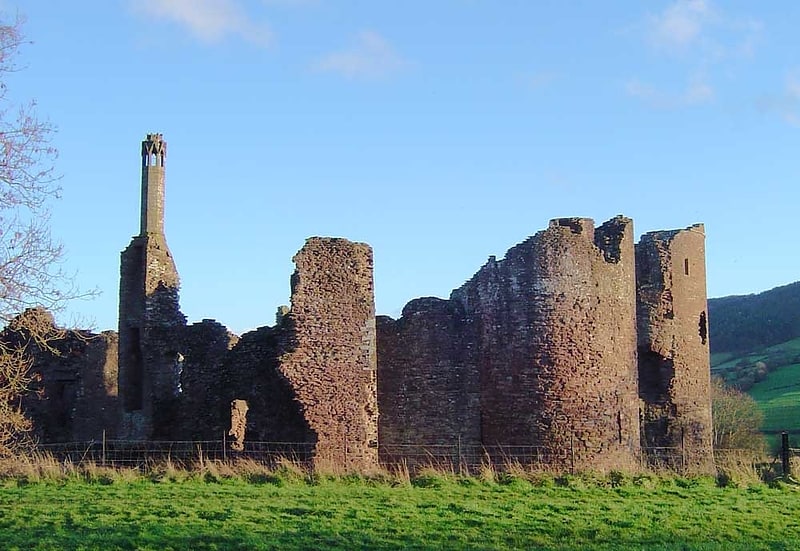
Castle in Grosmont, Monmouthshire, Wales. Grosmont Castle is a ruined castle in the village of Grosmont, Monmouthshire, Wales. The fortification was established by the Normans in the wake of the invasion of England in 1066, to protect the route from Wales to Hereford. Possibly commissioned by William fitz Osbern, the Earl of Hereford, it was originally an earthwork design with timber defences. In 1135, a major Welsh revolt took place, and in response King Stephen brought together Grosmont Castle and its sister fortifications of Skenfrith and White Castle to form a lordship known as the "Three Castles", which continued to play a role in defending the region from Welsh attack for several centuries.
King John gave the castle to a powerful royal official, Hubert de Burgh, in 1201. During the course of the next few decades it passed back and forth between several owners, including Hubert, the rival de Braose family, and the Crown. Hubert rebuilt the castle in stone, beginning with a new hall and then, on regaining the property in 1219, adding a curtain wall, gatehouse and mural towers. In 1233, a royal army camped outside the castle was attacked by rebel forces under the command of Richard Marshall. Edmund, the Earl of Lancaster, gained possession of the castle in 1267, and it remained in the hands of the earldom and later duchy of Lancaster until 1825.
Edward I's conquest of Wales in 1282 removed much of Grosmont Castle's military utility, although it was besieged in 1405 during the Glyndŵr Rising. By the 16th century it had fallen into disuse and ruin. The castle was placed into the care of the state in 1922, and is now managed by the Cadw Welsh heritage agency.[2]
Abergavenny Castle
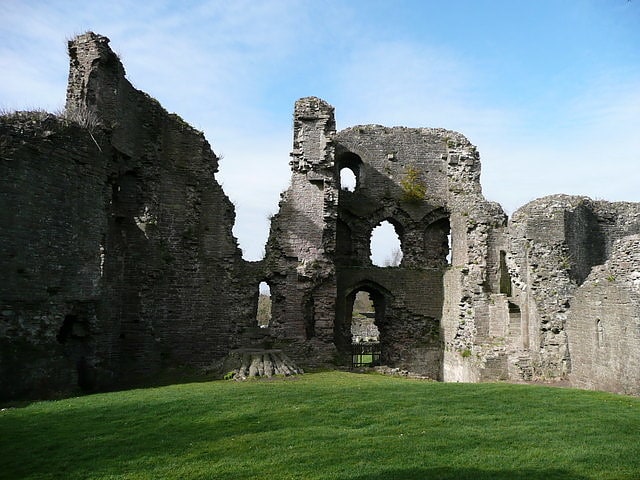
Museum in Abergavenny, Wales. Abergavenny Castle is a ruined castle in the market town of Abergavenny, Monmouthshire, Wales, established by the Norman lord Hamelin de Balun c. 1087. It was the site of a massacre of Welsh noblemen in 1175, and was attacked during the early 15th-century Glyndŵr Rising. William Camden, the 16th-century antiquary, said that the castle "has been oftner stain'd with the infamy of treachery, than any other castle in Wales."
It has been a Grade I listed building since 1952.[3]
Address: Castle St., NP7 5EE Abergavenny
Ysgyryd Fawr
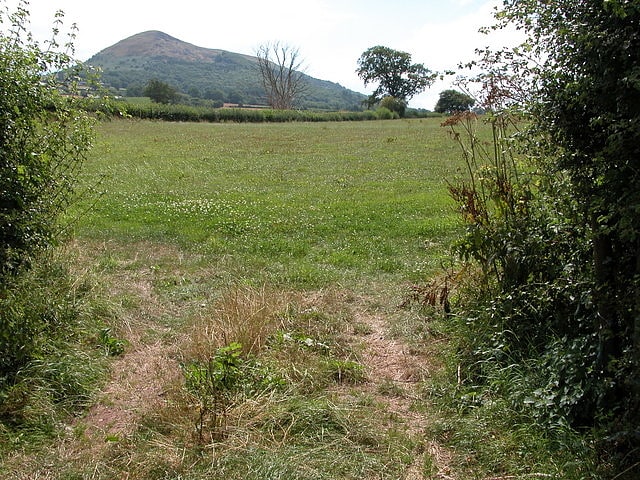
Mountain in Wales. Ysgyryd Fawr is an easterly outlier of the Black Mountains in Wales, and forms the easternmost part of the Brecon Beacons National Park. The hill is often referred to locally as just The Skirrid. The smaller hill of Ysgyryd Fach or "Little Skirrid" lies about 4.5 km / 2.5 mi to the south.
It is 486 m or 1594 feet high and lies just to the north-east of Abergavenny, Monmouthshire, about 10 miles from the English border. The Beacons Way passes along the ridge.[4]
Abergavenny Museum

Museum. Abergavenny Museum is a museum situated in the grounds of Abergavenny Castle, Abergavenny, Monmouthshire, south east Wales.
The museum is housed in the square 'keep' on the high point of the castle motte, in the hunting lodge built for the Marquess of Abergavenny in 1819 on the site. The castle grounds overlook the River Usk and Castle Meadows and is in Abergavenny town centre itself.[5]
Address: Castle St, NP7 5EE Abergavenny
Church of Our Lady and St Michael
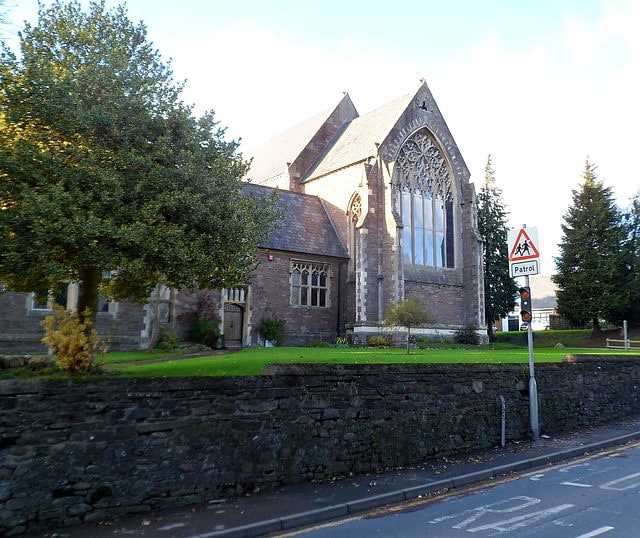
Catholic church in Abergavenny, Wales. The Church of Our Lady and St Michael in Abergavenny, Monmouthshire, is a Roman Catholic parish church. A Grade II* listed building, it was built between 1858 and 1860 to a design by Benjamin Bucknall.[6]
Priory Church of St Mary
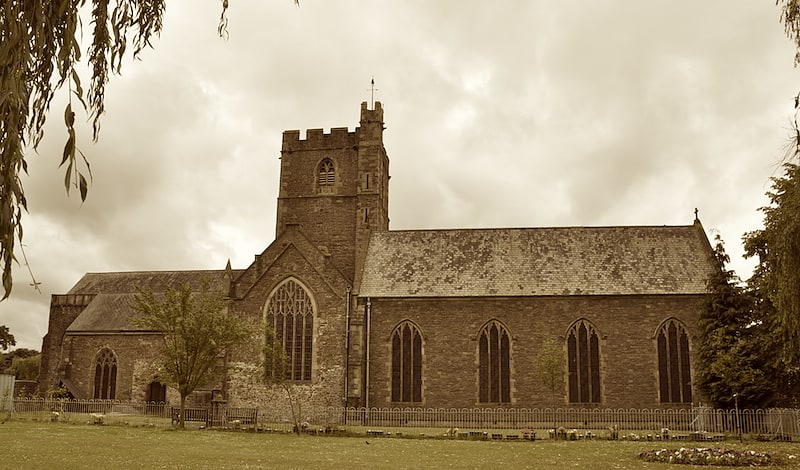
Building in Abergavenny, Wales. The Priory Church of St Mary, Abergavenny is a parish church in the centre of Abergavenny in Monmouthshire, Wales.
St. Mary's has been called "the Westminster Abbey of Wales" because of its large size, and the numerous high status tomb monuments and medieval effigies surviving within it. The church was designated as a Grade I listed building on 1 July 1952.[7]
Abergavenny town walls
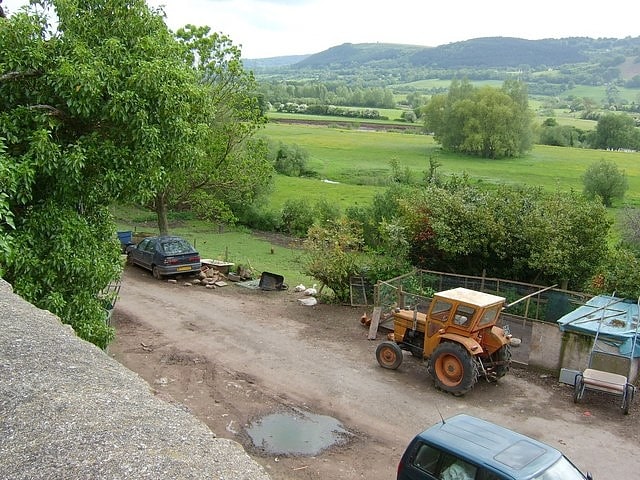
Abergavenny's town walls are a sequence of defensive walls built around the town of Abergavenny in Monmouthshire, Wales.[8]
Address: 61 Cross Street, Abergavenny
Gunter Mansion
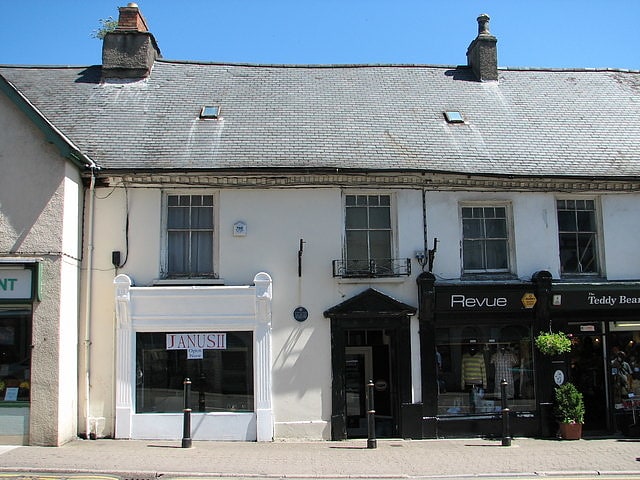
Building in Abergavenny, Wales. Gunter Mansion, 37–39 Cross Street, Abergavenny, Monmouthshire is a house of the early 17th century. It was built around 1600 and mentioned in 1678 in the House of Commons of the United Kingdom as a place of public Catholic worship. It the final place of prayer for Saint David Lewis before his execution on 27 August 1679. It is a Grade II* listed building.[9]
Abergavenny Bridge

Bridge in Wales. Abergavenny Bridge, crosses the River Usk at the boundary between Abergavenny and Llanfoist. The bridge carries the A4143. The bridge is of medieval origin, but was substantially reconstructed in the early 19th century, to support a tramroad, and in the mid 19th century, when the two bridges were combined.[10]
The Tithe Barn

Building. The Tithe Barn, Monk Street, Abergavenny, Monmouthshire is a tithe barn of late medieval origins which forms part of a group of historic buildings in the centre of the town. It is a Grade II* listed building.[11]
Address: Monk Street, NP7 5ND Abergavenny